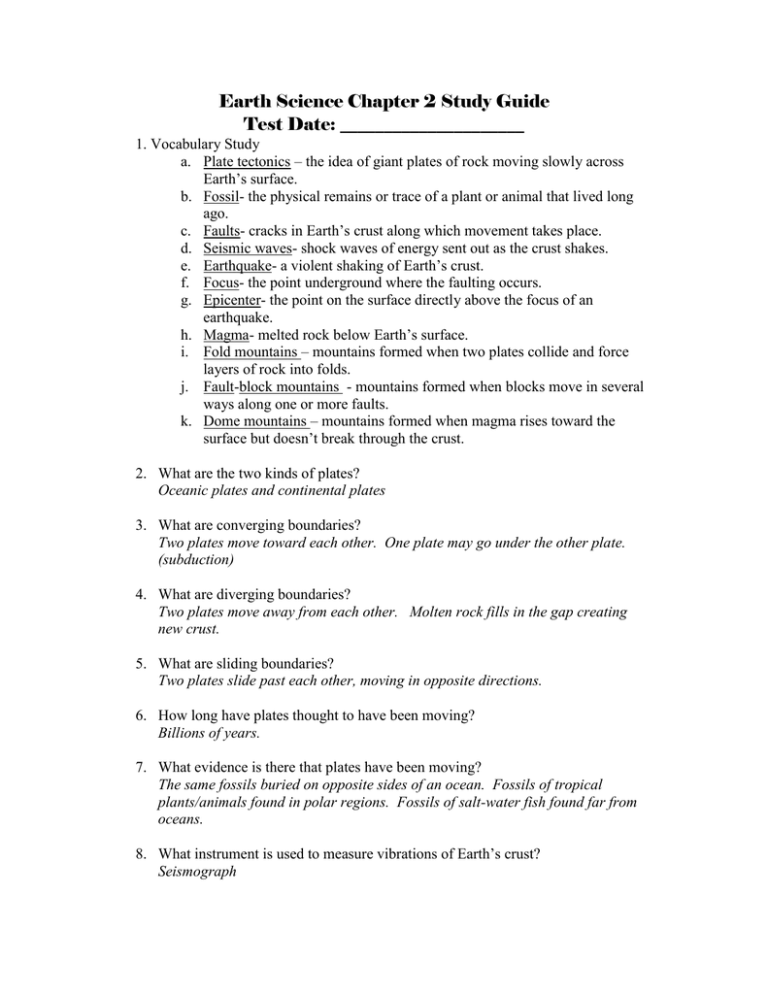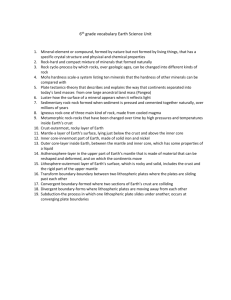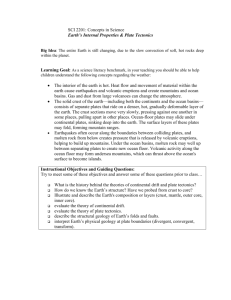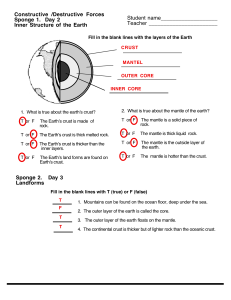Earth Science Chapter 2 Study Guide: Plate Tectonics
advertisement

Earth Science Chapter 2 Study Guide Test Date: _____________________ 1. Vocabulary Study a. Plate tectonics – the idea of giant plates of rock moving slowly across Earth’s surface. b. Fossil- the physical remains or trace of a plant or animal that lived long ago. c. Faults- cracks in Earth’s crust along which movement takes place. d. Seismic waves- shock waves of energy sent out as the crust shakes. e. Earthquake- a violent shaking of Earth’s crust. f. Focus- the point underground where the faulting occurs. g. Epicenter- the point on the surface directly above the focus of an earthquake. h. Magma- melted rock below Earth’s surface. i. Fold mountains – mountains formed when two plates collide and force layers of rock into folds. j. Fault-block mountains - mountains formed when blocks move in several ways along one or more faults. k. Dome mountains – mountains formed when magma rises toward the surface but doesn’t break through the crust. 2. What are the two kinds of plates? Oceanic plates and continental plates 3. What are converging boundaries? Two plates move toward each other. One plate may go under the other plate. (subduction) 4. What are diverging boundaries? Two plates move away from each other. Molten rock fills in the gap creating new crust. 5. What are sliding boundaries? Two plates slide past each other, moving in opposite directions. 6. How long have plates thought to have been moving? Billions of years. 7. What evidence is there that plates have been moving? The same fossils buried on opposite sides of an ocean. Fossils of tropical plants/animals found in polar regions. Fossils of salt-water fish found far from oceans. 8. What instrument is used to measure vibrations of Earth’s crust? Seismograph 9. What scale is used in measuring the size or magnitude of the Earth’s vibrations? Richter scale. 10. After a volcano erupts, what usually happens to the shape of its top? It collapses into a bowl-shaped mouth called a crater. 11. What is the Ring of Fire? An area of numerous earthquakes and volcanoes that borders the Pacific Ocean. 12. What is ejected from a volcanic eruption? Melted rock, hot gases, rock fragments, ash, lava. 13. Where do most mountains form? At plate boundaries. This is a constructive force.









